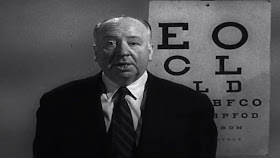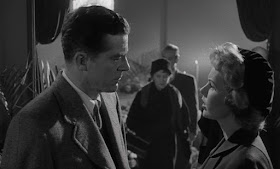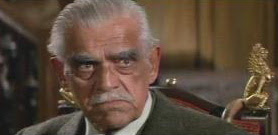 |
| "Have you paid your taxes?" Walter Greaza |
FEDERAL MEN (aka
Treasury Agents in Action/1950 - 1955.
This long-running fifties crime drama, consisting of 190 half hour episodes, looked at various, supposedly true cases investigated by the Treasury Department, under whose jurisdiction came everything from tax evasion to counterfeiting to smuggling. Each story was introduced by Walter Greaza as the somewhat stern chief, who is out to get you if you dare to cheat on your taxes. (One can see him putting sweet little old ladies in prison for failing to report bingo money!) If this program sounds a little dull, be forewarned that some of the episodes, standard looks at standard crime cases, are just that. But the best episodes of the series (at least the ones I've seen) focus just as much if not more on the human drama as on the crimes involved, looking into the desperate lives of people who sometimes feel they have no other option but to break the law.
 |
| "Lonely People:" Frances Rafferty and Skip Homeier |
One of the best episodes is "The Case of the Lonely People," in which a father and daughter team ensnare a crippled veteran (Skip Homeier of
Stark Fear) in a scheme to cash stolen veteran's checks, a scheme that becomes complicated when the vet and the daughter fall in love. Homeier and Frances Rafferty [
Money Madness] give outstanding and sensitive performances. Homeier was also terrific in "The Case of the Princely Pauper," playing a no-good guy from a once-wealthy family who smuggles in cheap rings and other goods, with his clients paying inflated prices when they think they're getting a bargain.
 |
| "Buried Treasure:" Byron Foulger |
Another excellent episode is "The Case of the Buried Treasure," in which a once-shady man and his wife bury booty they don't wish to declare to the IRS only to find out when they dig it up years later that it's become riddled with mold. Still, they do their damnedest to get rid of it. Byron Foulger [
The Black Raven] and Vivi Janis give notable performances in this. There were other memorable episodes as well. In "The Case of the Leather Bags" Joanne Davis nicely plays a washed up cruise singer who helps her boyfriend smuggle heroin. "The Case of the Man Outside" details how some prisoners are actually able to make counterfeit money while
inside a penitentiary, and the fate of the head of the shop who only wants to keep his nose clean and get parole.
 |
| "Steady Hand:" Gloria Talbott |
Gloria Talbott guest-starred in "The Case of the Steady Hand," playing a woman who has trouble accepting that her boyfriend is both a crook and a creep. Douglass Dumbrille plays a theatrical impresario who pretends his books all went up in smoke when the IRS comes a'calling in "The Case of the Slippery Eel." Paul Langton is a married hood and tax dodger who falls hard for a classy opera singer, only to learn she's of common stock herself in "The Case of the Perfect Gentleman." Charles Bronson plays an agent who is ordered to murder a man in "The Case of the Deadly Dilemma."
 |
| John Stephenson |
Several different actors portrayed Treasury, IRS and Customs agents over the years depending on the episode's target: Ross Martin, Harry Landers, Harry Lauter, and Richard Travis, among them. John Stephenson played Agent Grant in many episodes, although he did even more voice-over work for cartoons than he did live-action, everything from
The Flintstones,
The Jetsons and
Duck Dodgers to
G. I. Joe,
X-Men, and
Jonny Quest. As for star Walter Greaza, both before and after this series he was mostly cast as judges, cops and psychiatrists.
Verdict: Remember to pay your taxes! **3/4.











































